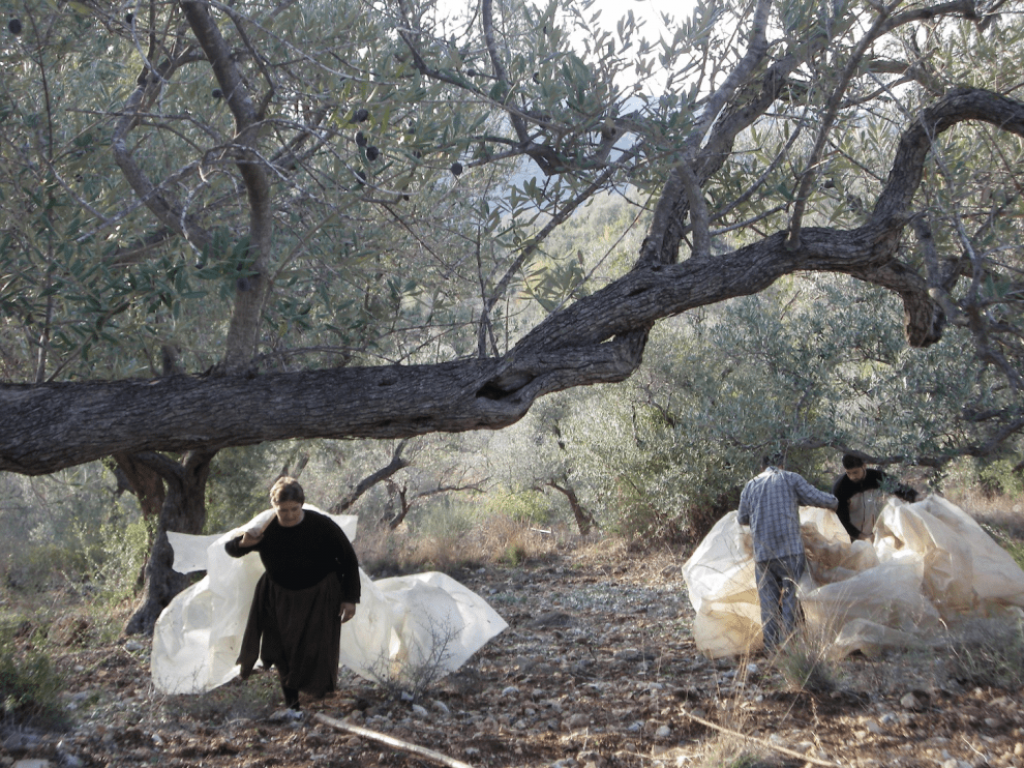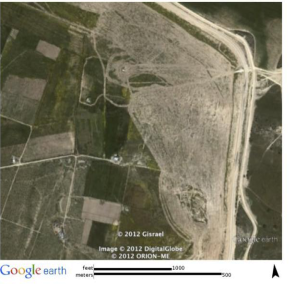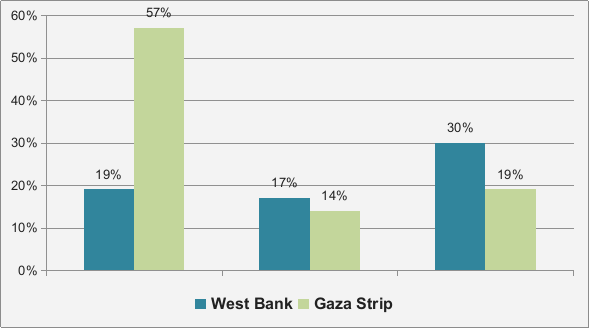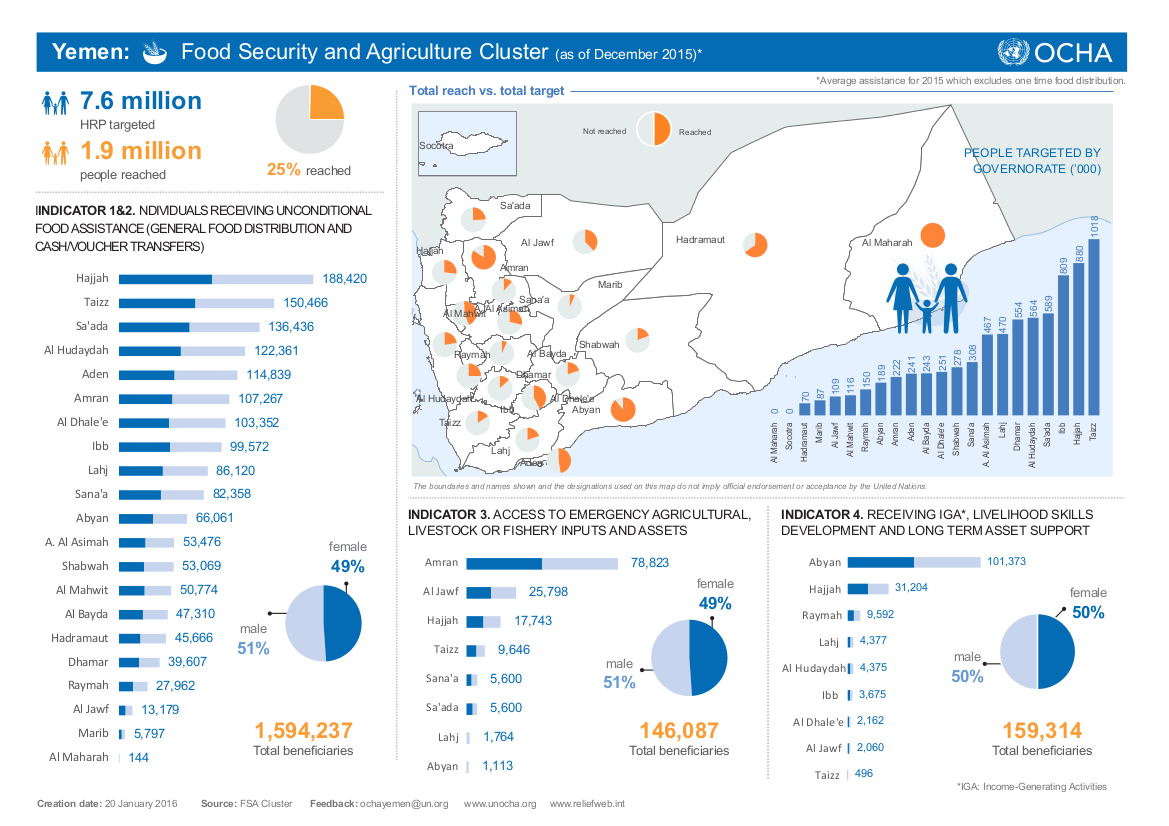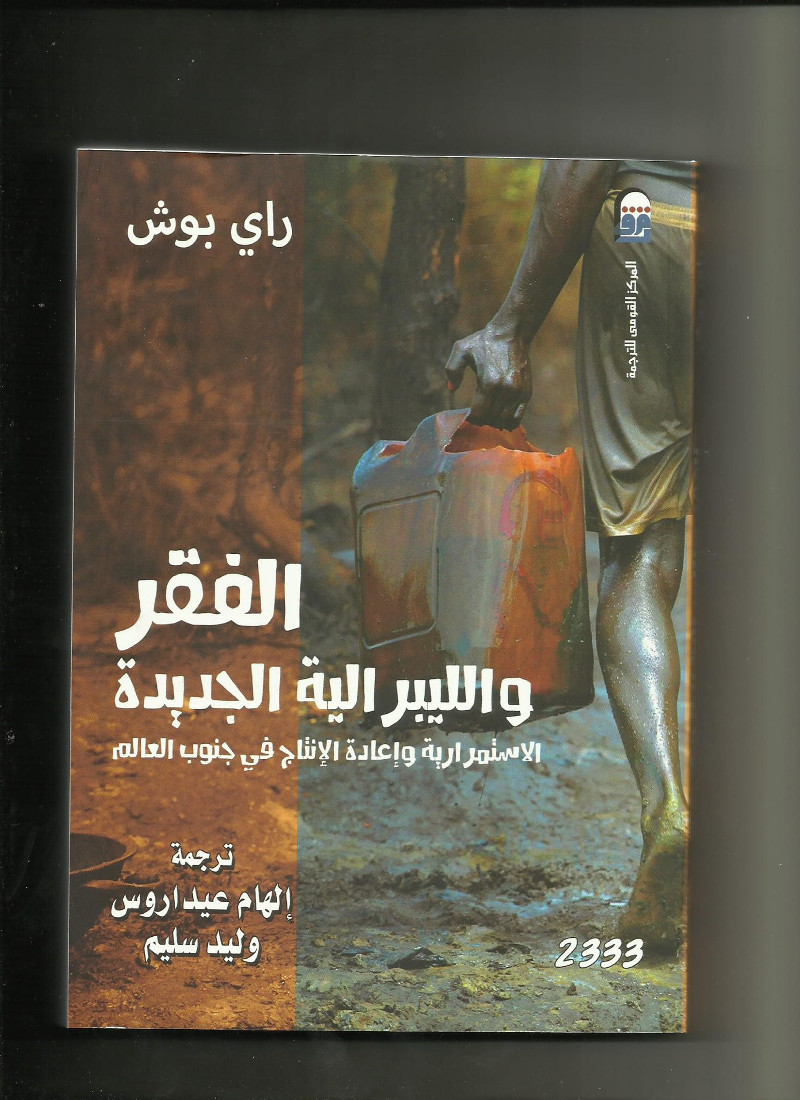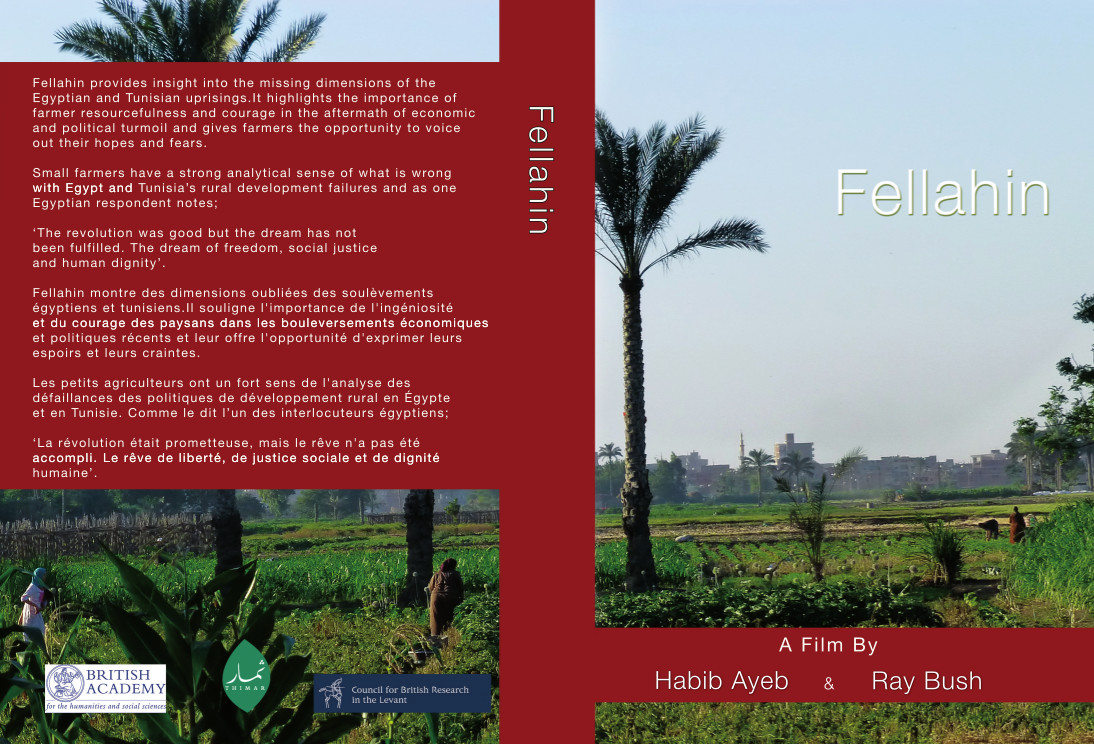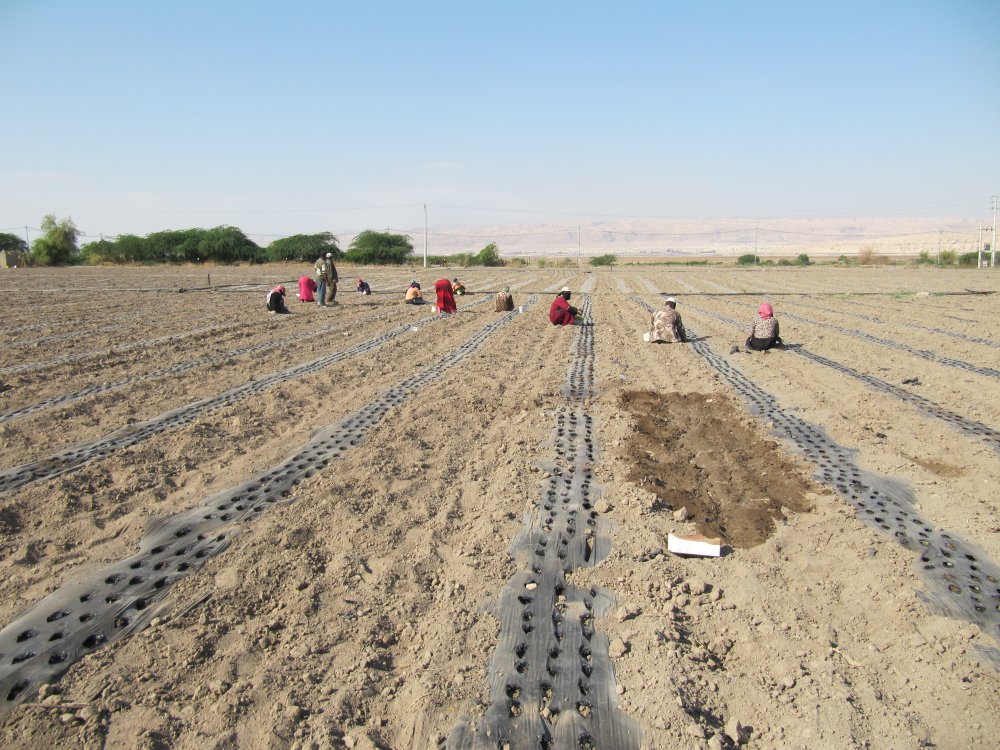فك الارتباط والزراعة البيئية
في سبعينيات وثمانينيات القرن العشرين، قيّمت مجموعة من المثقفين الأفارقة الجوانب السلبية والإيجابية لمشروع باندونغ في التنمية الوطنية. وكان المفكّر الاقتصادي المصري سمير أمين سباقًا إلى طرح بديل لمحاولة اندماج ناجحة في المنظومة العالمية. وقد صاغ أمين، باستلهام تجربة التحالف بين العمال والفلاحين في الصين الماوية، مفهوم فك الارتباط بوصفه استراتيجية تنمية شعبية تعتمد على إخضاع التدفقات المالية والتجارة الخارجية لقانون قيمة يقرره الشعب.
مثّل فك الارتباط ردًا سياسيًا واقتصاديًا على الضغوط الاجتماعية والاقتصادية التي تمارسها الرأسمالية على التنمية في الأطراف. لكنه لم يكن الرد الوحيد الذي جاء بعد أن اتضحت حدود تصنيع بدائل الاستيراد والاعتماد على المحاصيل السلعية والتحديث الزراعي القائم على خرافةطريق الفلاح المتوسط نحو التقدم. وبالتوازي مع تكريس أمين لطريق التنمية الماوي، بدأ مهندسون زراعيون من أنصار الفلاحين وعلماء البيئة والأحياء ومختصون في علم أصول النبات (Ethnobotany) وآخرون في البلدان المستعمرة سابقاً، بتأسيس حركتهم المضادة لمشروع باندونغ في التحديث الزراعي. لكن استراتيجيتهم التنموية لم ترتكز على الفلاحين من الناحية السياسية أو الاجتماعية، بل انصب اهتمامهم على الأساس الأنثروبولوجي والتكنولوجي والبيئي للزراعة "التقليدية" لهؤلاء الفلاحين. وأعدّوا من هذا المنطلق مجموعة مبادئ شكلت أساسًا لما أصبح الآن خطة عالمية لحداثة بديلة: الزراعة البيئية.
بدأتُ، فيما يلي، بعرض أولي لمفهوم فك الارتباط ونظرية المنظومات العالمية التي استندت إليها ومكان عمال البيئات الحضرية وفلاحيها في استراتيجية التنمية هذه. وأوجزتُ تاريخ الزراعة البيئية وعرضتُ المبادئ التي تستند إليها. ثم بينتُ نقاط التقارب والتباين بين الزراعة البيئية (agro-ecology) وفك الارتباط، برنامجيًا وتجريبيًا.
فك الارتباط
مثّل فك الارتباط ردًا ضروريًا من أمين على الآلية التي خلق بها قانون القيمة والتراكم على الصعيد العالمي تشكيلتين اجتماعيتين: مركز وأطراف. وفيها اعتمد تراكم الأخيرة، أي تاريخها بمعنى ما، على تاريخ المركز. كانت أطراف أمين ظلًا للمركز فحسب، وعُرّفت بالنفي، أي بما تفتقر إليه: برجوازية محلية ودولة محلية تسيطر على التراكم.
وضع أمين خمسة شروط لعملية التراكم في بلدان المركز: (1) إعادة إنتاج قوة العمل؛ أي تحقيق تنمية زراعية تنتج فائضًا من المواد الغذائية، ثم مع مرور الزمن، إنتاج ما يكفي البروليتاريا من السلع الاستهلاكية، (2) مركزة الفائض؛ أي حماية المؤسسات السياسية من ضغوط تدفقات الرأسمال العالمي، وبالتالي قدرة وطنية على ضخ الاستثمار، (3) السيطرة على سوق يقتصر عمليًا على الإنتاج المحلي، وتحقيق بعض القدرة التنافسية للسلع المحلية في الأسواق العالمية، (4) الملكية الرسمية للموارد الطبيعية وحرية القرار في استخدامها، (5) السيطرة المحلية على التكنولوجيا.
تحقق هذه العناصر مجتمعة اقتصادًا وطنيًا متمحورًا حول الذات. وليس التمحور هذا صورة عن الاكتفاء الذاتي، بل يعني خضوع العلاقات مع الأسواق والمنتجين الآخرين لاحتياجات التشكيلة الاجتماعية المحلية و"منطق التراكم الداخلي"، وهذا المنطق يتخطى التراكم الحسابي لرأس المال إلى التنظيم الاجتماعي السياسي لمجمل عملية التراكم (فك الارتباط، 11). كانت الفوردية أحد أشكال هذا التنظيم، وكذلك سياسات الاحتواء الاجتماعي المحلية (social containment). لم يتحقق هذا المنطق في التشكيلات الاجتماعية في الأطراف، وظلت البرجوازية الزراعية فيها ملحقة بالتراكم في المركز إلى أن بدأ التصنيع بالتسارع في حقبة باندونغ/الحقبة التنموية، التي احتلّت الفترة بين 1955 و1980 تقريبًا. ففي حقبة ما بعد الاستعمار، غَدت الطبقة الوسطى أكثر أهمية بالنسبة للتراكم في الأطراف- إذ أصبحت أساس تصنيع استبدال الواردات Import-substitution industrialization والسوق المحلية.. لكن انتشار الديمقراطية الاجتماعية وتنامي سوق داخلية ، وهما سمتان مميزتان للتراكم في المركز، كانتا غائبتين(13).
أشار أمين إلى جانبين رئيسيين في مشروع باندونغ. أولاً، تصور هذا المشروع أن يكون لبرجوازية تابعة دورًا في توجيه مسار متمحور خارجيًا إلى تنمية رأسمالية متمحورة داخليًا، في ظل غياب شبه تام لأي تجسيد تاريخي ملموس لنموذج مشابه. ثانياً، هاجمت الولايات المتحدة هذا المشروع في كل مناسبة ومنذ ولادته تقريبًا. وغالبًا ما اتّجهت برجوازية الأطراف في خضم هذه المعمعة إلى "تقبّل الكومبرادورية" (17).
لم يخلُ بلد من عبء التخلف أو تجربة التحرر منه. وقد اقترح أمين كسر القيود بواسطة "فك الارتباط". وفك الارتباط ليس طريقًا لتحقيق الاكتفاء الذاتي بل شرطًا لتنمية "متمحورة حول الذات" في بلدان الأطراف، والتمحور حول الذات بوصفه سلطة وطنية على التراكم (18). وقد طُرح فك الارتباط بوصفه خيارًا سياسيًا لتغيير آلية صنع القرار المحلي. وهو يمثل قطيعة مع المنطق القاضي بصياغة السياسات المحلية وفق ما تعتبره السوق العالمية الرأسمالية قيّمًا. وبدلًا من هذا المنطق، يفرض "تحالف شعبي" داخلي قيوده ويتبنى سياسات وفقًا لقانون القيمة الخاص به: قيم ومصالح العمال والفلاحين (19).
يستطيع هذا التحالف أن يطلق برنامجًا عمليًا قائمًا على ثلاثة ركائز. أولاً، نبذ "العقلانية الرأسمالية" العالمية وإخضاع جميع العلاقات الخارجية للخيارات والقيم الداخلية. ثانياً، امتلاك قدرة سياسية تسمح بإدخال إصلاحات باتجاه المساواة. وهذه القدرة هي أيضًا في صميم فك الارتباط، لأن البرجوازية المحلية مستكينة تمامًا للوضع الراهن. وثالثًا، القدرة على "استيعاب التكنولوجيا، والإبداع" (60).
اقتدى أمين في نمذجة هذا التحول بتجربة تحالف العمال والفلاحين في الصين الماوية. حيث تعكس قيم مخرجات الإنتاج مدخلات العمل، وبالتالي تجري معايرة الأجور والأسعار بما يضمن حق العمال في المدينة والريف (المنتجين الصناعيين والزراعيين) في المطالبة بحصص من الناتج الاجتماعي مساوية لمدخلات عملهم (62). لكن "العقلانية" وقوانين القيمة المتباينة تأخذ صيغة كمية-نوعية عندما نعتبر أن ساعة واحدة من العمل الزراعي في الأطراف تنتج عُشر مثيلتها في المركز. وتنتج ثلاث ساعات عمل في القطاع الصناعي في الأطراف ما تنتجه ساعة واحدة في المركز. وإن تمّت معايرة الأجور والأسعار وفق حسابات المركز، فستؤدّي إلى هجرة كثيفة للعمالة من الريف إلى المدينة، إلى حيث يتمركز الفائض في القطاعات الصناعية. أما في نموذج فك الارتباط، فتبقى نسبة العائدات إلى العمل ثابتة. وهي تبقى كذلك حتى إذا لم تزِد الإنتاجية الزراعية عن نسبة 2 في المئة سنويًا، وإن ازدادت الإنتاجية في المدينة بالمقابل بنسبة 3 في المئة سنويًا. لذا، يتطلّب الأمر تعديل الأجور والأسعار باستمرار لضمان ألّا تؤدي زيادة الإنتاج إلى تباين الدخل بين الريف والمدينة.
في مجال الروابط بين القطاعات، يرى أمين أن قطاع السلع الوسيطة في المدينة يغذّي إنتاجية القطاع الريفي، وهذا "يغذي" القطاع المديني بالمعنى الحرفي للكلمة. ثم تتوالى الحلقات "الحميدة". ويستند هذا التبادل إلى حزمة تكنولوجية محددة؛ أي تكثيف متزايد لرأس المال وفقًا لنموذج فك الارتباط، وبالتالي زراعة مصنّعة تعتمد على المدخلات. من المفهوم ألّا يُخضع أمين هذه التقنيات لتمحيص شديد، وأيضًا ألّا يدرك أو يبيّن بوضوح العلاقة بين الزراعة كثيفة المدخلات والتدهور طويل الأمد للبيئة الحاضنة للزراعة. بل بدا، خدمة لنموذجه، وكأنه يعتبر الزراعة مصنعًا موجودًا في الحقل؛ مصنعًا ذا إنتاجية أقل من مصانع المدن (64-66). والمفهوم المرافق لذلك هو الانفتاح على "تحديث وتحسين التكنولوجيات التقليدية" والاستخدام الانتقائي لبعض التكنولوجيات المستوردة (67). وشكل ذلك موافقة لا لبس فيها على الخلطة التكنولوجية في الصين الماوية، التي جمعت روث الخنازير ومخلفات البشر والأسمدة الخضراء مع الأسمدة الكيماوية والجرارات الكبيرة والصغيرة التي راحت تغزو الحقول. وبما أنه نموذج مستمدّ من التجربة التاريخية للتنمية الزراعية القائمة على مدخلات رأس المال وتكنولوجيا تقليدية، فقد دمج أمين بين هذه التكنولوجيات في نمذجته الكمية وبرنامجه. كان أمين مثقفًا موسوعيًا، لكنه لم يستطع الإحاطة بكل شيء، ولا سيما عندما بالغ في تقدير، أو على الأقل في ضرورة، مساهمة المدخلات الخارجية في زيادة الإنتاجية الزراعية في حالة الصين كما على نطاق أوسع. كما لم يكن نبيًا ليدرك أن الزراعة البيئية ستقدم بعد فترة وجيزة ترجمة متماسكة للمبادئ العلمية التي أحيَت تجربة شرق آسيا، وفي الوقت نفسه دليلًا تجريبيًا على إنتاجية التقنيات المتجددة بلا حدود واستدامتها. أنتقل الآن إلى الحركة المضادة الثانية لمحدودية مشروع باندونغ.
الزراعة البيئية: تاريخ موجز
الزراعة البيئية هي تطبيق التجربة العلمية على العمليات الأساسية للأنظمة الزراعية التقليدية، وتكريسها رسميًا. وبالتالي، ليس مفاجئًا أن تتعدد جذورها الإقليمية بقدر تنوع الحضارات الزراعية: من الزراعة بطرق الميلبا وتشينامبا والجلول الزراعية في أمريكا الوسطى والأنديز إلى سدود تحويل المياه والمدرجات والطابيات الترابية في المغرب إلى أنظمة الزراعة المتكاملة للبط مع الأرز والأنظمة المائية المبتكرة في شرق آسيا.
بدأت الزراعة البيئية في إحدى تجلياتها المتعددة عندما سعى العلماء لفهم الزراعة التقليدية عند الفلاحين المكسيكيين. وبالتوازي، وضع آخرون نظريات المكافحة الحيوية للآفات الزراعية بدلاً من المبيدات الحشرية السامة. وكانت هذه الأبحاث تجري بشكل متزامن في مختلف أرجاء العالم، مع "عودة" مجموعة متنوعة من المهندسين الزراعيين إلى تجربة الفلاحين عشية "الثورة الخضراء" التي قلبت الأنظمة الزراعية وأربكت عملها عبر مسيرتها من المكسيك إلى الهند إلى تونس. ومثّلت العودة إلى تجربة الفلاحين - أو أصحاب الأراضي الصغيرة في الريف - ردة فعل على الخراب الذي أحدثته الثورة الخضراء والأنظمة المائية التي تتّسم بكثافة رأس المال، على الفلاحين والبيئة بشكل متوازٍ. كما اغتنت الزراعة البيئية وتلاقحت على نطاق واسع مع الدراسات الفلاحية الشعبية الجديدة التي ركّزت على الفلاحين كطبقة عاملة أصلية ومنتجة في الأطراف، ومهمة في المركز لهذا السبب بالذات.
الزراعة البيئية: المبادئ
الزراعة البيئية هي مجموعة أفكار مشتقة من مزج أنظمة المعرفة المحلية الأصلية مع عناصر العلوم الحديثة والعلوم الإثنية (ethnoscience)، أو بشكل أوسع علم البيئة وعلم الاجتماع والمكافحة الحيوية والعلوم الزراعية الأساسية والأنثروبولوجيا والإيكولوجيا الإثنية والاقتصاد البيئي. لكنها ليست "وصفات تقنية"، ولا تشكيلة مدخلات، وإنما مجموعة مبادئ يسمح امتلاكها بالانتقال المباشر إلى أشكال تكنولوجية محددة هي أشكال مشتقّة من معارف المزارعين التقليديين. كما أنها ثمرة أبحاث تشاركية في المزارع. إنها إبداع مشترك.
تشترك أنظمة الزراعة التقليدية، أو أنظمة الزراعة التي لم "تُحدّث" أو تُصنّع، في ست ميزات. الأولى، مستويات مرتفعة للتنوع البيولوجي وتنظيم أداء الأنظمة البيئية وتوفير خدمات النظام البيئي. والثانية، أنظمة الحفاظ على الأرض والتضاريس والموارد المائية. والثالثة، أنظمة زراعة متنوعة أو مختلطة. والرابعة، أنظمة زراعة بيئية قادرة على الصمود ومواجهة التغيرّات الطارئة والتكيّف مع نزوات طقس متقلب وعاصف أحياناً. والخامسة،هي تتغذّى من أنظمة المعرفة التقليدية أو المتوارثة وليس على المعرفة النظرية المعتمدة على الكتب والتكنولوجيات المرتبطة بها. والسادسة، القيم الثقافية وأشكال التنظيم الاجتماعي التي تضمن وصول واسع إلى الموارد.
تقوم هذه الأنظمة بدمج الماشية أيضاً بالزراعة. فبالإضافة إلى زراعة محاصيل عديدة(Poly-cropping) ، فإنها تحافظ على تنوع الثروة الحيوانية جينياً ميدانياً (in-situ) في المزارع. وتتمتع هذه الأنظمة بميزة أخرى مهمة، ولو أنها ليست معمّمة، وهي اندماجها السلس في النسيج الطبيعي. وفي الواقع، تضمن مبادئ الزراعة البيئية نشوء دورة استقلابية مغلقة نسبيًا. أولًا، إعادة تدوير الكتلة الحيوية. ثانياً؛ تعزيز "الجهاز المناعي" للنظام الزراعي ككل بواسطة تشجيع تربية الأعداء الطبيعيين للآفات الزراعية. ثالثًا، تعزيز التربة الصحيّة. رابعًا، الحد من ضياع الماء أو الطاقة أو العناصر الغذائية عن طريق الحفاظ على التربة والمياه والتنوع الحيوي وتجديدها. خامساً، تعزيز الأنواع والتنوع الوراثي واستدامتها مكانيًا وزمانيًا. سادسًا، تعزيز التآزر (synergies)بين مختلف العمليات البيئية والبيولوجية.
إن هذه الأنظمة، التي أجاد تصميمها بعض أهم مخترعي ومهندسي الابتكارات البشرية، تتفوق في الإنتاج على الزراعات الأحادية السائدة في مشروعات التحديث الزراعي الغربية. كما أن فشلها في مواجهة الكوارث الناجمة عن تغير المناخ أقل بكثير من فشل الزراعات الأحادية. صحيح أن هذه الأنظمة - من ناحية المحصول، وضمنه الفائض المحتمل، الهدف المنشود للتكنولوجيات المتمحورة حول الإنتاجية – تنتج أقل لكل محصول على حدة، لكن عند تقييمها اعتماداً على وحدة المساحة، فإن إنتاجها أكبر بكثير. إضافة إلى أن الزراعة البيئية قد تتفوق على الأنظمة التقليدية في زراعة الحبوب أو الحراجة الزراعية في الأراضي الهامشية. وإلى ذلك، فإنها لا تستنزف الصحة البيئية بل تعزّزها ، وهي –أي الصحة البيئية- مصدر قيمة الاستخدام التي تبقي المًزارع شغّالة.
فك الارتباط والزراعة البيئية
فك الارتباط هو إخضاع العلاقات الخارجية لدولة أو لتشكيلة اجتماعية للمصالح الشعبية الداخلية. وتتمثل أحد مرتكزاته الأساسية في رفض السعي لتأمين التمويل اللازم للاستثمارات المعزِّزة للإنتاجية على حساب الرفاهية الداخلية. أما الزراعة البيئية فهي بطبيعتها أساسية لفك الارتباط، بما أنها تتفادى المدخلات الباهظة المطلوبة لـ "تحديث" الزراعة. وفي المحصلة تُنتج التشكيلة الاجتماعية فائضًا أكبر، ويتوجه الإنتاج والعمليات الصناعية في المدن أو في الريف إلى قطاعات السلع الاستهلاكية أو ذات الرأسمال بدلاً من السلع الوسيطة. فالأولى تلبي احتياجات السكان المباشرة، بينما تلبيها الأخيرة بصورة غير مباشرة. وفي كلتا الحالتين، تسمح الزراعة البيئية بعقلنة الطابع الاجتماعي للعمل.
من جهة أخرى، تتمثل نقطة ضعف فك الارتباط باعتماده على التدفقات التكنولوجية الخارجية واستقدام مستشارين أجانب للتدريب على استخدام هذه التكنولوجيات أو تشغيلها بتكلفة باهظة غالبًا، مما يجبرنا على استيراد منشآت صناعية جاهزة واستيراد البذور وقطع الغيار والأسمدة بصورة مستمرة، ثم نصل أخيرًا إلى الشروط القاسية للحصول على رأس المال اللازم لتأمين تدفق هذه الإمدادات الخارجية. ولذلك تُعتبر الزراعة البيئية، أو يجب اعتبارها، التكنولوجيا المركزية لفك الارتباط، عدا عن كونها مناسبة تمامًا للشريك الفلاحي في تحالف العمال والفلاحين، جوهر فك الارتباط. أولاً، لا يعتمد هذا النظام الزراعي على الدولة إلا بحدود ضيقة نسبيًا في مجالات الدعم المؤسسي والإرشاد والمساعدة في توسيع نطاق الزراعة البيئية نفسها. وثمة أدلّة أيضًا على زيادة حجم الإنتاج في ظلّه، وأدلّة أخرى على أن مخرج المعادلة الإنتاجية المادية العمل/ الوقت يتناقص في هذا النظام، مما يزيد إنتاجية طرفي المعادلة. وتوجد شواهد على تحقيق زيادة في الإنتاج بعد التحول إلى نظام الزراعة البيئية في كوبا، حيث وصلت إلى ضعف أو ثلاثة أضعاف في بعض الأحيان، حتى عندما يحدث انخفاض حاد في الطاقة البشرية والميكانيكية. الأمر الذي يسمح بتحرير العمل لتلبية احتياجات اجتماعية أخرى، بما فيها التصنيع الريفي الصغير. وليس من قبيل الصدفة أن تحقّق كوبا واحدة من أكبر نجاحات الزراعة البيئية على المستوى الوطني. وقد حدث ذلك نتيجة فك الارتباط القسري مع النظام الرأسمالي العالمي بسبب الحصار الذي أجبرها على تعديل أنظمتها الزراعية.
إضافة إلى ذلك، فإن نموذج أمين مستمدّ، ربما دون علمه، من إحدى طرق الزراعة التي استخدمت تكنولوجيات وعمليات ومبادئ تقوم عليها الزراعة البيئية؛ والمقصود هنا طريقة فلاحي الصين. عمليًا، هناك مثاليْن تاريخيين بارزين على أنظمة إنتاجية وطنية مستقلة نسبياً اعتمدت وما تزال على إنتاج الزراعة البيئية؛ هما كوبا والصين. أخيرًا، يجب على فك الارتباط مراعاة المسألة البيئية بما يضمن ألّا يؤدي الإنتاج الإجتماعي إلى أضرار طويلة الأجل، تضرب استدامة ا البيئة. وفي هذا الجانب، فقد تعلمنا ممّن استلهم نظرية المنظومات العالمية في مجال البيئة، أن التراكم على الصعيد العالمي استند إلى التخلي عن المسؤولية البيئية. ويترتب على ذلك منطقيًا التزام برنامج فك الارتباط باعتماد أشكال إنتاج تمنع تراكم الأضرار البيئية في الأطراف. ونؤكد مجددًا على أن الزراعة البيئية هي نمط إنتاج شعبي قادر على تلبية الاحتياجات الإنسانية للشعوب دون إحداث ضرر دائم بالبيئة. ومن هذا الجانب أيضًا، تكون البيئة وفك الارتباط القائم على أولوية رفاهية الفلاحين والزراعة البيئية المرتكزات الثلاثة للتنمية المستدامة للجنوب.
الخلاصة
أوضحت هذه الدراسة العلاقة بين فك الارتباط والزراعة البيئية. وتناولت هذين الردين على مشروع باندونغ على المستوى البرنامجي، وتطرقت إلى مثالين تاريخيين بارزين لإنتاج قائم على فك الارتباط في زراعة تقارب بحدود كبيرة نهج الزراعة البيئية. وما أقترحه في هذا الصدد أن يكون تحليل فك الارتباط المستمد من نظرية المنظومات العالمية المقترنة بنظرية التبعية، معيارًا سياسيًا-استراتيجيًا تصبح الزراعة البيئية بموجبه الشكل المركزي للإنتاج الزراعي.
تم دعم ترجمة هذه المقالة من قِبل The Leverhulme Trust 
المصادر: سمير أمين؛ فك الارتباط، سمير أمين؛ مستقبل الماوية، بيتر م. روسيت وميغيل أ. ألتييري؛ الزراعة البيئية والعلوم والسياسة، ليزلي تسي تشيو كو؛ الزراعة في جمهورية الصين الشعبية، بيتر روسيت وبروليو ماكين سوسا وأديلين ماريا روك خايمي ودانا روكيو أفيلا لوزانو. "فلاح لفلاح؛ حركة الزراعة البيئية للرابطة الوطنية للمزارعين الصغار في كوبا: منهج العملية الاجتماعية في ارساء زراعة فلاحية مستدامة وسيادة غذائية". مجلة دراسات الفلاحين 38، رقم 1 (2011): 161-191.
Sources: Samir Amin, Delinking; Samir Amin, The Future of Maoism; Peter M. Rosset and Miguel A. Altieri, Agroecology, Science and Politics; Leslie Tse-Chiu Kuo, Agriculture in the People’s Republic of China, Peter Rosset, Braulio Machín Sosa, Adilén María Roque Jaime, and Dana Rocío Ávila Lozano. “The Campesino-to-Campesino Agroecology Movement of ANAP in Cuba: Social Process Methodology in the Construction of Sustainable Peasant Agriculture and Food Sovereignty.” The Journal of Peasant Studies 38, no. 1 (2011): 161–191.

